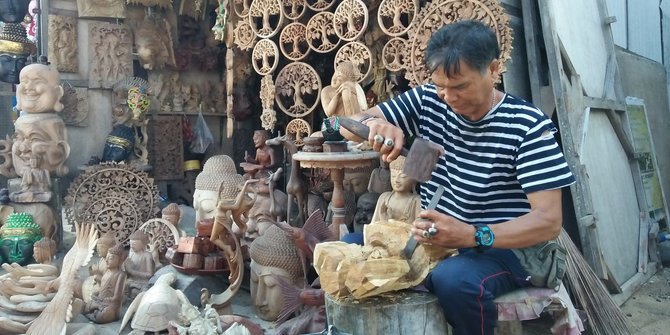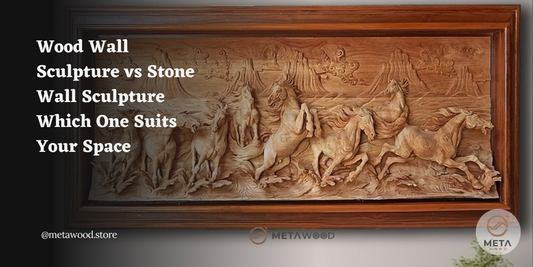The History of Wood Carving in Bali
Humans have thrived in Bali since approximately 255 BC. Over that period, a unique culture developed which remains to this day. One part of this culture includes the art of woodcarving; a skill passed down through generations. Wood carving is seen as more than just a craft here, it's almost sacred. It's no surprise that the carved offerings adorning doors and gateways around the island are intricately beautiful.
Wood Carving as a Tradition
Wood carving has been an ancient and popular craft in Bali for hundreds of years. Known in the Balinese language as “batuan”, wood carving has roots in Bali’s Hindu-Buddhist culture. Traditionally, wood carvings are carved in honour of Hindu gods or for use at cremation ceremonies. Wood carvings are mainly made out of trees cut down in the jungles on the island, but can be purchased at local markets. Although wood carving is no longer the sole tradition it once was, it continues to be practiced by artisans who pass their skills down from generation to generation.
The Wood Carving Process
Typically Balinese wood carvings are made from hard woods with a coarse grain such as teak, chempaka wood and sandalwood. Cut using simple tools like the machete, saw and chisel, each piece is unique and you will see that each piece has its own individual characteristics. Unlike the mass-production processes often used by other carvers, here the artist's touch is essential to the design of the carving. The process involves intricate carving on both sides of each block of wood, which takes time to accomplish but results in a unique design that cannot be duplicated by machine carving.
Balinese Symbols and Meaning in Wood Carving
Balinese Symbols and Meaning in Wood Carving is a comprehensive study of Balinese art and culture as seen through its carvings. The craftsmen of Bali use certain specific symbols to represent the Balinese world view and show the unity between man, nature and the supernatural. These symbols are found on many types of wooden carvings, including statues for temples, homes, sarcophagi and other objects used in everyday life. The most common examples of symbols found in wood carvings are of birds, flowers and plants along with cultural artifacts such as boats, weapons and headdresses. For example, one symbol that has been adopted by many different cultures around the world is the swastika. 
In Ancient India it represented well-being and prosperity but later became a symbol for evil after it was used by the Nazis during World War II.
In conclusion, the history and culture of wood carving in Bali is a rich one that has been passed down over many years through oral tradition. Wood carving contributes to the overall sense of beauty and aesthetics in Bali, and it is only fitting that this artistic tradition grows with each generation. As more and more Balinese artists bring their own unique spin on this art form, more people are starting to learn about wood carving.
Discover the rich culture of Bali, Indonesia. The finest Balinese wood panel is offered in here.





